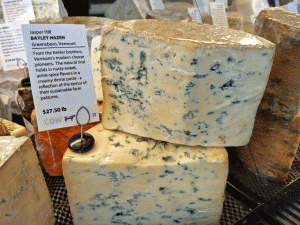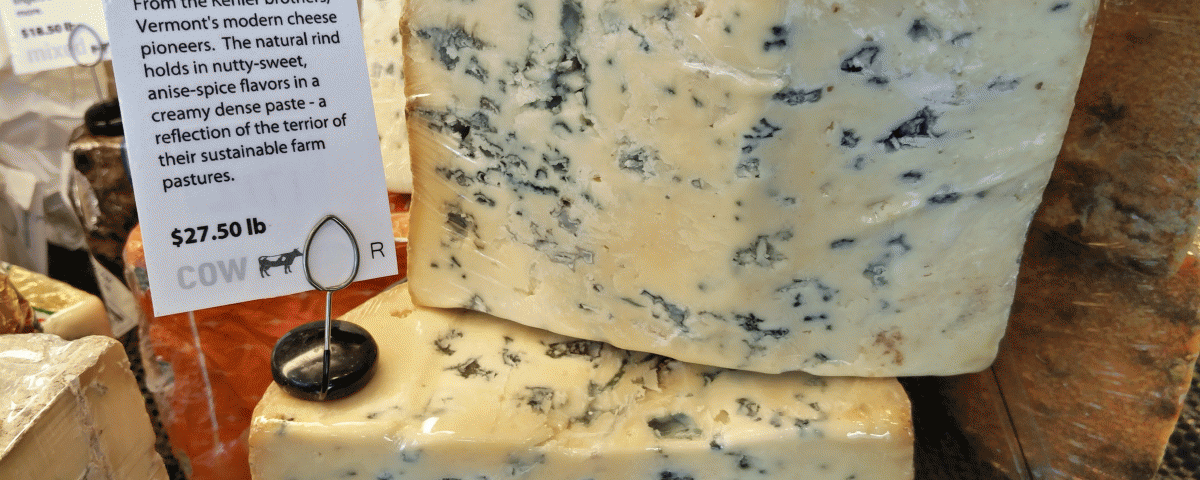Marché’s Cure For the Winter Blahs
January 13, 2016THAT’S A MOUTHFUL: HOW TO PRONOUNCE SOME OF OUR FAVORITE CHEESE
February 24, 2016So what’s our favorite blue right now? It depends on which cheesemonger at Marché you ask.
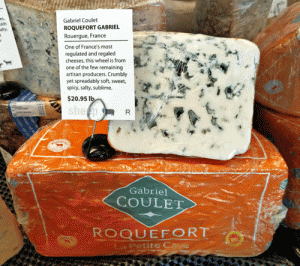 Maureen:
Maureen: 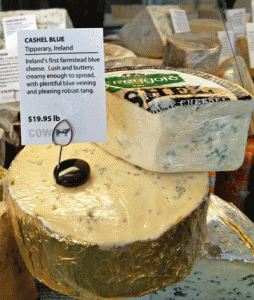 Susan:
Susan: The fourth generation of Roelli family cheese makers, out of Shullsburg, Wisconsin has found a new niche in making small batch artisanal cheese. Dunbarton Blue combines the greatness of a fine English Cheddar with the bite and creaminess of a French Blue. Try pairing it with a Pale Ale, Stout, Zinfandel or Merlot and you have a perfect match.
Kate: 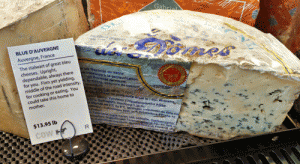
Bleu d’Auvergne was perfected after a lovelorn cheesemaker left his wheel in a cave to fend for itself while he pursued his love. Instead of spoiling, the natural bacteria of the cave aided in forming the well rounded, smooth, generously veined and creamy blue we know today. Through the years the practice of aging alongside rye bread, which develops and feeds the bacteria, as well as a technique called “needling” to deliver oxygen and bacteria throughout, perfected Bleu d’Auvergne into the ‘prince of blues,’ second only to Roquefort. A solid choice for the blue cheese beginner. Nothing to leave you frightened nor wanting more. Great for everyday to make a salad just that much better, or to enjoy with a nightcap of slightly dry, but sweet Riesling.
 Tim:
Tim:I love this story! Kicked out of England 300 years ago for religious differences, the Grubbs packed up and took to milling and butter making practices in County Tipperary, Ireland, where to this day Louis and Jane still keep the family’s dairy traditions alive. The Cashel Blue story begins in 1938, when Samuel Grubb, newly married and returned from his travels in many parts of the world, buys Beechmount Farm from a childhood friend and begins to farm the land, a task carried on by his four children. When Samuel passes away, his son Louis returns to the farm in 1979 with his new wife, Jane, and the couple invest everything they have to buy a dairy herd of 90 cows. In 1984, the first Cashel Blue is ready for the market. It is the very first Irish blue cheese and, initially, it elicits almost as much bewilderment as excitement in the country. This cheese wins its first accolade that year, being awarded 1st place at the Clones Agricultural Show. The following year, they receive their first U. K. order from the prestigious Neal’s Yard Dairy, beginning a long-standing relationship between Cashel Blue and the United Kingdom, a relationship that will be underscored when Queen Elizabeth II is served Cashel Blue at a State Banquet to honor her historic visit to Ireland in 2012. Cashel Blue is pasteurized, and ripened for two and up to six months. This exquisite cheese maintains a unique, voluptuous, creamy texture with a mineral undertone complemented by a delightful, mild blue tang. My favorite way to enjoy this cheese is with a dry Riesling, strong beers, such as an Vertex IPA or a light and delightful OPP Pinot Noir.
